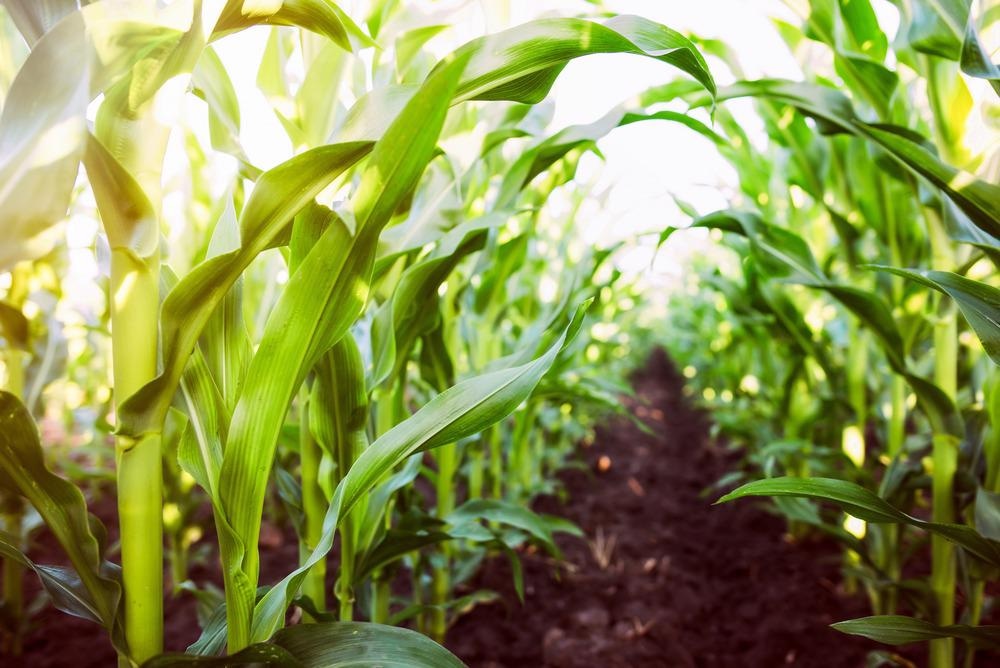The world is headed into a food crisis. As the population grows and climate change ravishes arable farmland and reduces the reliability, quantity, and quality of crop yields, the world may not be able to produce enough food to feed the world in the near future. There will be roughly 9 billion people on the planet by 2050. To feed everyone, we would need to double our current agricultural output.

Image Credit: funnyangel/Shutterstock.com
Scientists are engineering innovative strategies to enhance crop yields, such as leveraging the IoT, sensors, and artificial intelligence (AI) to reduce reliance on valuable resources (e.g. water, energy), mitigate the impact of global warming (e.g. drought, rising temperatures), reduce food waste (e.g. crop spoilage), and enhance crop yield and quality by calculating the right time and location to plant and reap different species of plants. Now, machine learning (a subfield of AI) is being leveraged to locate 'genes of importance' that enable crops to grow with less fertilizer, according to a new study.
Previous challenges in leveraging genomic data to predict agricultural outcomes
A team at NYU alongside scientists at institutions in the US and Taiwan have designed a platform that uses agricultural and medicinal outcomes using genomic data. Until this point, the use of genetics had offered much promise in this area, however, it had proved a challenge to successfully execute. Previously, scientists had been working to establish a system that takes advantage of the vast amount of genomic data that researchers have access to, to help predict how organisms, such as crops, might respond to different factors such as changes in nutrition and toxins, as well as exposure to pathogens.
The aim of developing such technology was to help improve crop yields, inform disease prognosis and epidemiology, as well as benefit public health. However, the wide-scale utilization of genomic data for predicting complex outcomes had remained out of reach, until a new study was published in the journal Nature Communications.
In the new study, researchers were able to detect patterns of gene expression to highlight those that are evolutionarily conserved across species. This method allowed the team to understand what genes may be of high importance to facilitating successful crop production, such as those responsible for growth and resilience to disease.
Using genetics to select crop varieties with beneficial attributes
The new technique exploits the natural variation of gene expression both across and within species. The team looked for genes whose expression patterns were conserved within and across species, as this pattern preservation indicates which genes are important to a certain trait.
To prove their concept, the scientists showed that genes whose responsiveness to nitrogen are conserved between two very different species of plant, a small flowering plant known as Arabidopsis and several varieties of corn, significantly enhanced the machine learning model’s efficacy at predicting genes that are important to nitrogen processing in plants. This development is fundamental to improving agricultural outcomes as nitrogen is one of the most important nutrients for crops and is the central component of fertilizer.
In times when farmers are searching for more efficient ways to sustainably and reliably enhance their crop production, the identification of crops that are able to use nitrogen more efficiently is important as it reduces the need for the expensive resource of fertilizer and helps farmers choose varieties of crops that may be more likely to produce bigger yields. It is also key to helping reduce the carbon footprint of the agricultural industry. This is important because the high levels of emissions that are currently produced by the sector are damaging its future success. By lowering the emissions associated with crop production, the agricultural industry takes one step towards reaching carbon neutrality, a target of all industries following the Paris Agreement of 2015.

Image Credit: Dmitry Demidovich/Shutterstock.com
Additionally, the team showed that their machine learning technique was able to predict genes that are important to other traits, such as resistance to droughts and biomass yields. The approach may be developed to identify varieties of crops with favorable genes in all aspects to enhance overall crop security, establish future sustainability of the agricultural industry and help to prevent the global food crisis.
Finally, this project demonstrates the potential of machine learning and big data in the agricultural sector. It shows how leveraging cutting-edge technology can help to solve challenges that have previously been unsolvable. This research will likely spur on further explorations of how machine learning and genetics can be utilized to overcome some of the most pressing issues facing today’s agricultural industry, such as the impact of climate change; food security; and the carbon footprint of the agricultural process.
In the coming years, we will see more applications of genomics in agriculture. For example, already, this year we have seen the knowledge of genetics being leveraged in Bolivia where climate change has reduced the security of their staple crop - the potato. Scientists are working on identifying those that have the genetics to allow them to thrive in the changing conditions that have been brought on by climate change.
Sources:
- Cheng, C., Li, Y., Varala, K., Bubert, J., Huang, J., Kim, G., Halim, J., Arp, J., Shih, H., Levinson, G., Park, S., Cho, H., Moose, S. and Coruzzi, G., 2021. Evolutionarily informed machine learning enhances the power of predictive gene-to-phenotype relationships. Nature Communications, 12(1). https://www.nature.com/articles/s41467-021-25893-w
- Han, M., Okamoto, M., Beatty, P., Rothstein, S. and Good, A., 2015. The Genetics of Nitrogen Use Efficiency in Crop Plants. Annual Review of Genetics, 49(1), pp.269-289. https://www.annualreviews.org/doi/10.1146/annurev-genet-112414-055037
- Jennings, S., Koehler, A., Nicklin, K., Deva, C., Sait, S. and Challinor, A., 2020. Global Potato Yields Increase Under Climate Change With Adaptation and CO2 Fertilisation. Frontiers in Sustainable Food Systems, 4. https://www.frontiersin.org/articles/10.3389/fsufs.2020.519324/full
Last Updated: Feb 24, 2022